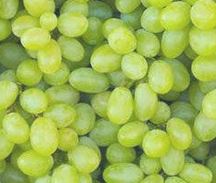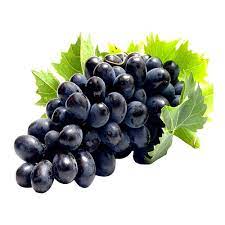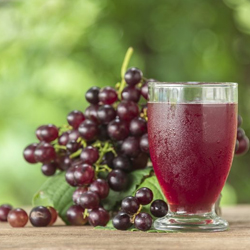Grape Cultivation : There is no doubt that grapes are the most popular fruit in the world. There is a special place in people’s hearts for this tasty and healthy fruit. During the summer, grapes are one of the most popular fruits. They are juicier and healthier than most other fruits. We can maintain our pH level with the help of this delicious fruit. The product comes in a variety of colors and varieties.
About Grapes Farming
Grapes are the world’s most popular crop. As well as making wine and raisin readiness, it can be used to make a table fresh fruit as well. Grapes also have the scientific name Vitis and are part of the Vitaceae family. Grape development is thought to have begun near the Caspian Sea; Indians are familiar with grapes from Roman times. About 40,000 hectares are under grape cultivation in India, primarily in Maharashtra, Karnataka, Andhra Pradesh, and Tamil Nadu. Grapes are primarily grown in Maharashtra.
Origin Of Grapes
The viticulture is believed to have originated in Armenia near the Caspian Sea in Russia, from where it spread west to Europe and east to Iran and Afghanistan. Invaders from Iran and Afghanistan brought grapes to India in 1300 AD.
Grape Production in India
Grape production in India is among the world’s top ten. A number of countries, including Italy, France, Spain, the USA, Turkey, China, and Argentina, are major grape producers. On an area of 0.05 million hectares, it produces 1.21 million tonnes (about 2% of the World’s production of 57.40 million tonnes). In 2001-2002. In India, grapes account for 1.2% of the total area under fruit crops. There are 2.8% of fruits produced in the country. Maharashtra accounts for about 80% of the production, followed by Karnataka and Tamil Nadu.
| Grape Production State in India | 2017-2018 | ||
| Sr. No. | States | Production (Tonnes) | Share (%) |
| 1. | Maharashtra | 2,286.44 | 78.30 |
| 2. | Karnataka | 524.20 | 17.95 |
| 3. | Tamil Nadu | 58.93 | 2.02 |
| 4. | Mizoram | 18.00 | 0.62 |
| 5. | Andhra Pradesh | 15.92 | 0.55 |
| 6. | Punjab | 8.23 | 0.28 |
| 7. | Telangana | 5.27 | 0.18 |
| 8. | Madhya Pradesh | 1.28 | 0.04 |
| 9. | Jammu & Kashmir | 0.89 | 0.03 |
| 10. | Nagaland | 0.54 | 0.02 |
| 11. | Kerala | 0.18 | 0.01 |
| 12. | Himachal Pradesh | 0.13 | 0.00 |
| 13. | Haryana | 0.09 | 0.00 |
Season of Grape Growing

India’s most lucrative farming industry is grape growing. The cultivation of grapes is called Viticulture. India generally grows grapes between October and January. Grapes are cultivated in India during spring because this is the season when they are able to grow well. There are times when grapes are planted when the rainstorm is late in June-July. The primary reason for keeping away from monsoon planting is to prevent infections on young children.
The trenches were opened for planting in the N-S direction. Tranches might measure sixty to seventy-five centimeters wide. After that, these trenches were loaded up with FYM, natural fertilizers, organic blends, neem cakes, etc. The sort of soil, the collection, and the preparation strategy all affect soil separation for planting. Typically, the distance between columns will be two to three meters, while the distance between plants within a line will be half that, accommodating plants from 2000 to 5000 per hectare.
Climatic Requirement For Grape Plantation
Mediterranean climates are ideal for grape crop development. When the weather is hot and dry, the plants grow and produce. Plants have a vegetative growth period between April and September, followed by a fruiting period between October and March under South Indian conditions. In order to affect the yield and quality of grapes, temperatures need to be above 100°C to 400°C. In addition to lowering the TSS: Acid ratio, high humidity and cloudy weather conditions are conducive to many parasitic illnesses.
Soil Requirement
Grapevines thrive on soils with pH 6.5 to 8.5, natural carbon content exceeding 1.0%, free from lime, and a medium water holding limit. However, the quality and yield of grapes are highest on soils with a pH of 6.5 to 8.5, natural carbon content above 1.0%, and medium water holding capacity. In the early harvest, however, medium yields with high TSS are harvested on medium soil types.
Cultivation Of Grapes

How to cultivate grapes or how to grow grapes is a common question that people widely ask, so for them, this section is the perfect stop. Following are the grapes cultivation methods:-
Grapes Plantation
The high demand for grapes is driving grape cultivation in India to increase rapidly. The fruits are cultivated using soil varieties and three specific weather conditions. South Indian commercial fruit. Among India’s most rewarding and productive developments is grape cultivation. A “growth pruning” is performed on Indian grapes to remove dry sticks.
The horticulture work halts during September and October. The poles need to be re-cut when the grapes are ready to bear organic produce from February to April. There are some interesting improvements made by some creative farmers in the two prunings. As a result of doing this, they get production in December-January, increasing their produce’s cost.
Grapes Irrigation
Irrigation of grapes is consistent and complete, ensuring a long harvest. The interval for a flood water system is 5-7 days during summer, 8-10 days during winter, and 15-20 days during the windy season, whereas the interval for a water system is 40-50 liters; 30-40, 20-30 liters of water per plant each day.
Grapes Farm Harvesting
North Indian plants bear fruit two years after they are planted. In early varieties, berries begin to ripen by the end of May. The majority of varieties, however, harvest when the foliage becomes sweet and changes colour near the tip. A day before harvesting, broken, rotten, deformed, undersized berries were removed. Temperatures above 200 °C are usually reached in the early morning when the bunches are harvested.
The yield varies depending on the climate, the variety, etc. Statistically speaking. Anab-e-Shahi and Bangalore Blue yield 40-50 tons per hectare, while seedless varieties yield 20 tons per hectare. A good yield is 20-25 tons per hectare.
Grape Varieties In India

This article discusses some varieties of grapes grown in India.
1. Thompson Seedless

There are several varieties of Indian grapes, but Thompson Seedless is the first on the list. A Sultana assortment of seedless grapes is called Thompson Seedless in the United States. In India, light green oval grapes are a common snack food, and their raisins are eaten as a snack. There are three main grape varieties grown in Northern India: Thompson Seedless, Pandhari Sahebi, and Beauty Seedless. Grape farms commonly grow this variety.
2. Bangalore Blue, Karnataka

Bangalore blue is the second grape variety on the list. Another popular variety is Bangalore blue, which is another seedless variety. Karnataka cultivates this variety extensively. Jams and jellies are made from this variety. The taste of these blue grapes gives them a special identity among the people. During rough summers, they keep your body hydrated. It’s worth a try if you’ve never tried this fruit before.
3. Anab-e-Shahi, Andhra Pradesh

Anab-e-Shahi is the third grape on the list. Grapes have a long history dating back to about 1900. This variety of grape is consumed raw or as juice. The An-e-Shahi grape is grown in the states of Andhra Pradesh, Punjab, Tamil Nadu, Haryana, etc. Originally cultivated in AP, this variety has spread to other states. Fruit seeds and skin contain a lot of nutritional value, keeping the body healthy. Grapes have an elongated shape and white seeds. The high demand for Sultana grape varieties will eventually lead to their extinction, however.
4. Dilkhush Grapes

Dilkhush Grapes are the fourth variety on the list. Likewise to sultana grapes, Anab-e-shahi grapes are clones of this variety. Grapes from Dilkhush have a spicy taste, and the best time to grow them is during the warm summer months of March and April. Many other states follow Karnataka as the state with the highest production. The raw or table purpose of this grape type is well known.
5. Sharad Seedless Grapes

Sharad seedless is the fifth variety on the list. There are black and purple varieties of this grape variety. There is a good sweetness to it, and it comes in a variety of bright colors. In India, Sharad seedless grapes are considered to be one of the healthiest fruits due to their high vitamin A, C, and B6 content. India’s northern regions are known for growing this grape variety, and Mumbai is the country’s leading grape-growing city. Sharad Seedless grapes are best cultivated in December and February. Foreign markets are very interested in this delicious fruit because of its taste and health properties.
Importance Of Grapes
Health Benefits Of Grapes:-
- Packed With Nutrients such as Vitamin C & K
- High Antioxidant of grapes, preventing Chronic Diseases
- Plant Compounds of Grape, protecting against specific types of cancer
- Profitable for heart health
- Reduce cholesterol
- Decrease blood sugar levels
- Protect against diabetes
Uses Of Grapes:-
There are a lot of uses of grapes, some of them are mentioned below for grape lovers.
Wine

Wine is fermented from grapes.
Shake

The grapes used in making shakes make them easy to prepare.
Ice Cream

Grape, fresh cream, honey, or sugar are the only ingredients in this creamy, soft, and delicious ice cream.
Juice

Juice made from grapes that is delicious and healthy.
Grape Pie

Concord grapes are the main ingredient in grape pie.
Angur Chaat

There are several types of fruit chaats, but grape chaat is one of the most popular.
Here are the grape varieties, and we hope you learn everything you need to know about grapes, grape farms and their uses. Please visit Aarug Agro if you are interested in grape cultivation implements in India. Among the topics covered here are grape cultivation technologies and many others.



[…] Read More :Indian Grape Cultivation: Varieties, Uses & Methods […]